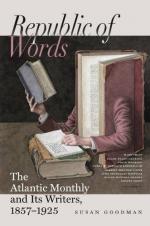Comfortably installed in the Chinese chair, and refreshed with the Belatta pawnee, I proceeded to take notes. Karlee had discarded his working dress for festal attire,—the difference being one of quality merely. Round his waist he wore a dhotee of coarse muslin, tight above, so as to form the kummerbund, or waistband, but thence falling in loose and not ungraceful folds down the legs to the ankles. Over his body another ample mantle, in no respect differing from the dhotee as to texture or color, was wrapped like a broad scarf, and carelessly flung over the shoulder in the fashion of a Highland plaid. In the “cold” season he would draw this over his head for a hood. These sheets of cloth are worn just as they come from the loom; needle or pin has never touched them, and they are held in place by tucking the ends under the folds.
Being a Hindoo gentleman of the old school, Karlee repudiated the headdress at home; for the puggree, at least in its present form, was adopted from the Mohammedan conquerors, and is, historically, a badge of subjugation. So when he met me at the door his head was uncovered; but I had no sooner crossed the threshold than he made haste to don his flat turban,—reflecting, perhaps, that I had never seen him without it, and might resent his bare head as an indignity. Of course his feet were unshod. To have worn his sandals in my presence would have been a flagrant insult; but on the porch I espied those two queer clogs of wood, shaped to the sole of the foot, and having no other fastening than an impracticable-looking knob, to be held between the toes.
This is the orthodox Hindoo dress; but the costume for public occasions of many Hindoos of rank has been for a quarter of a century in a state of transition from Mohammedan to British. By way of turbans, loose trousers, Cashmere shawls, and embroidered slippers, they are marching on toward pantaloons, waistcoats, shoes and stockings, stove-pipe hats, and tail-coats. A baboo of superlative fashion, according to the code of Young Bengal, paid me a visit one day in a state of confirmed “pants” and “Congress




